The word “wasp” usually brings to mind a very unwelcome house guest: yellowjackets trying to get in on a barbecue, or paper wasps building a threateningly large nest where they’re not supposed to.
But living among them are the lesser-known braconid wasps that often go about their business unnoticed. These innocuous wasps don’t bite or sting, and they’re far from aggressive—unless there’s a helpless caterpillar or aphid around.
That’s when things can get rather gruesome in a fascinating “I can’t look away” sort of way, as braconids are a type of parasitoid wasp: a beneficial insect that lives on (or in) its host and ultimately consumes its hapless victim.
If you’ve ever seen a tomato hornworm festooned with white cocoons that look like grains of rice, or a brown, puffed-up aphid that appears mummified, you’ve just witnessed the work of a braconid wasp.
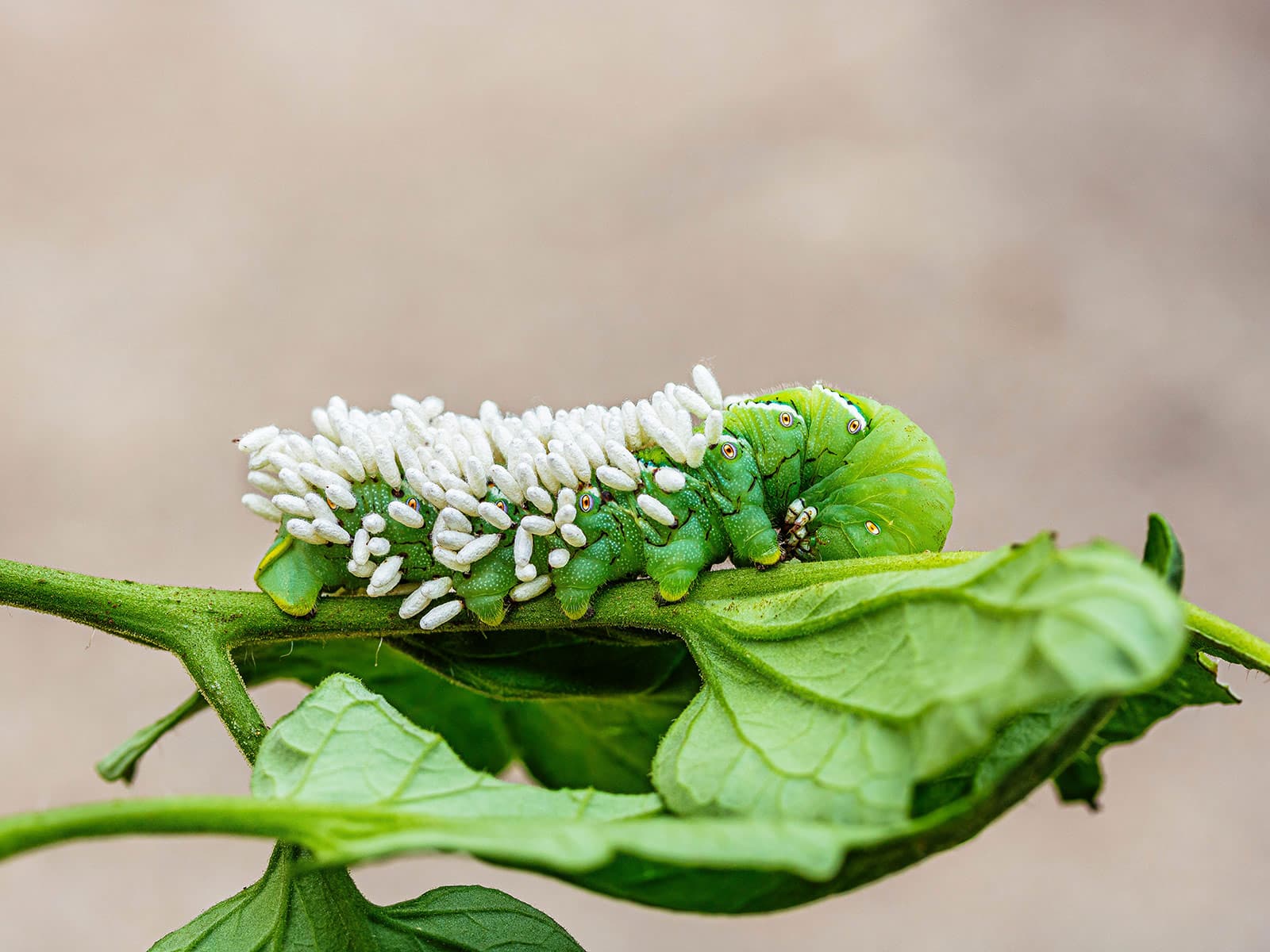
Encouraging a population of these beneficial wasps in your garden is an effective way to control pests, and fortunately, there’s not much you have to do to get them to stay.
Have you seen a braconid wasp in your garden?
Because these diminutive wasps blend in with all the other nondescript bugs in your garden, you’re much more likely to encounter their victims than the wasps themselves.
At first glance, a braconid wasp doesn’t look like your typical wasp: It’s tiny (less than 1/2 inch long) and doesn’t bear any of the ominous-looking black and yellow bands on its body. Most of these wasps are black, brown, or red with black wings. Some are even yellowish-orange.
A braconid has an ant-like head, long antennae, a narrow “wasp waist,” and a long ovipositor for laying eggs.
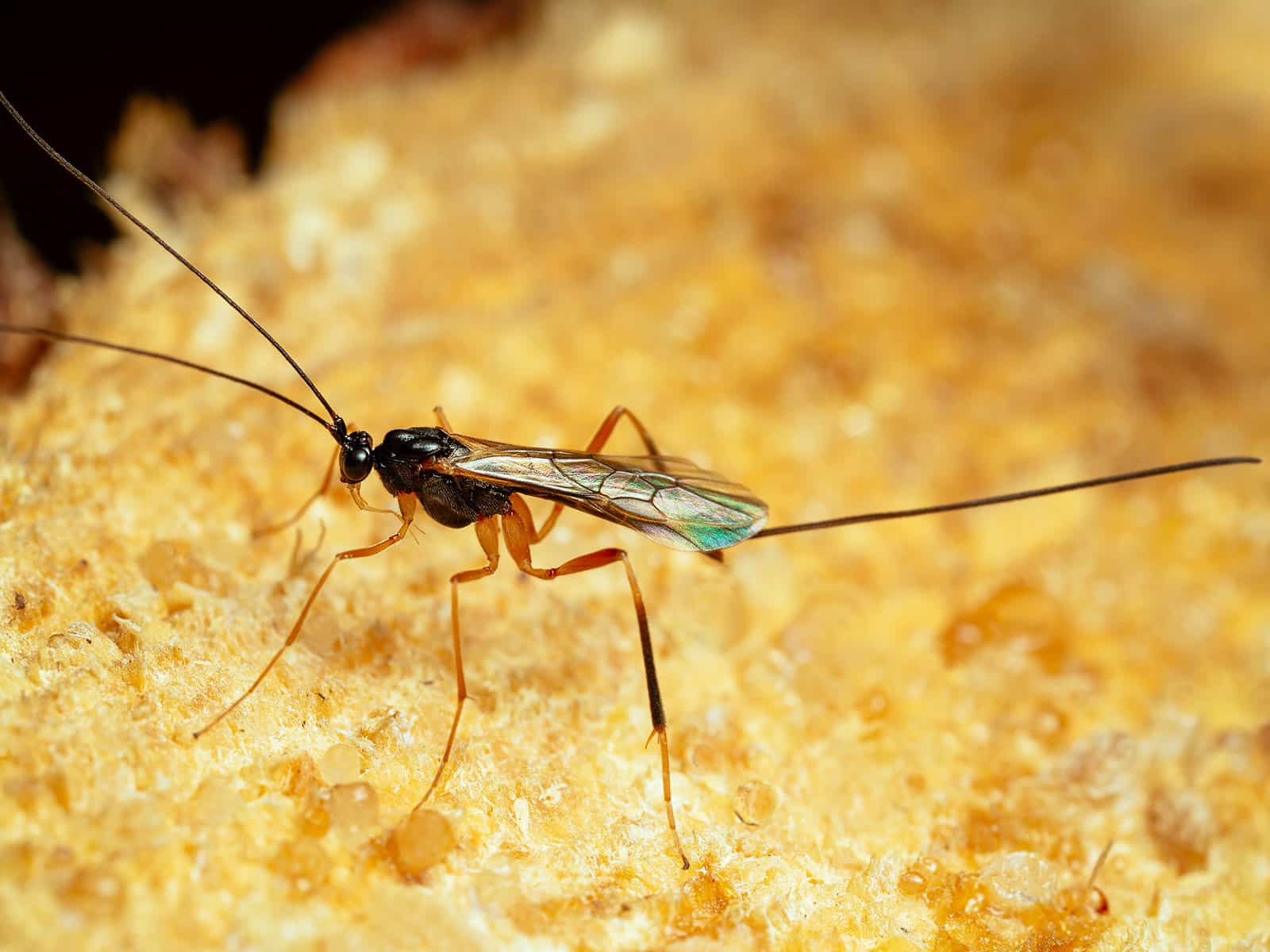
Braconids resemble another type of parasitoid (ichneumonid wasps) but are generally smaller in size and darker in color. (Having both of these parasitoids in your garden is a good thing!)
In North America, there are about 2,000 known species of braconid wasps (in the family Braconidae) and different species parasitize different stages in their hosts’ life cycles. The most common hosts include garden pests like hornworms, cabbageworms, sphinx moth caterpillars, aphids, leaf miners, beetle larvae, and flies.
How braconid wasps attack their hosts
Adult braconid wasps are actually quite harmless; it’s their young that do the dirty work. The adults spend their days feeding on nectar and pollen, so they (along with many other insects flying around your garden) are pollinators.
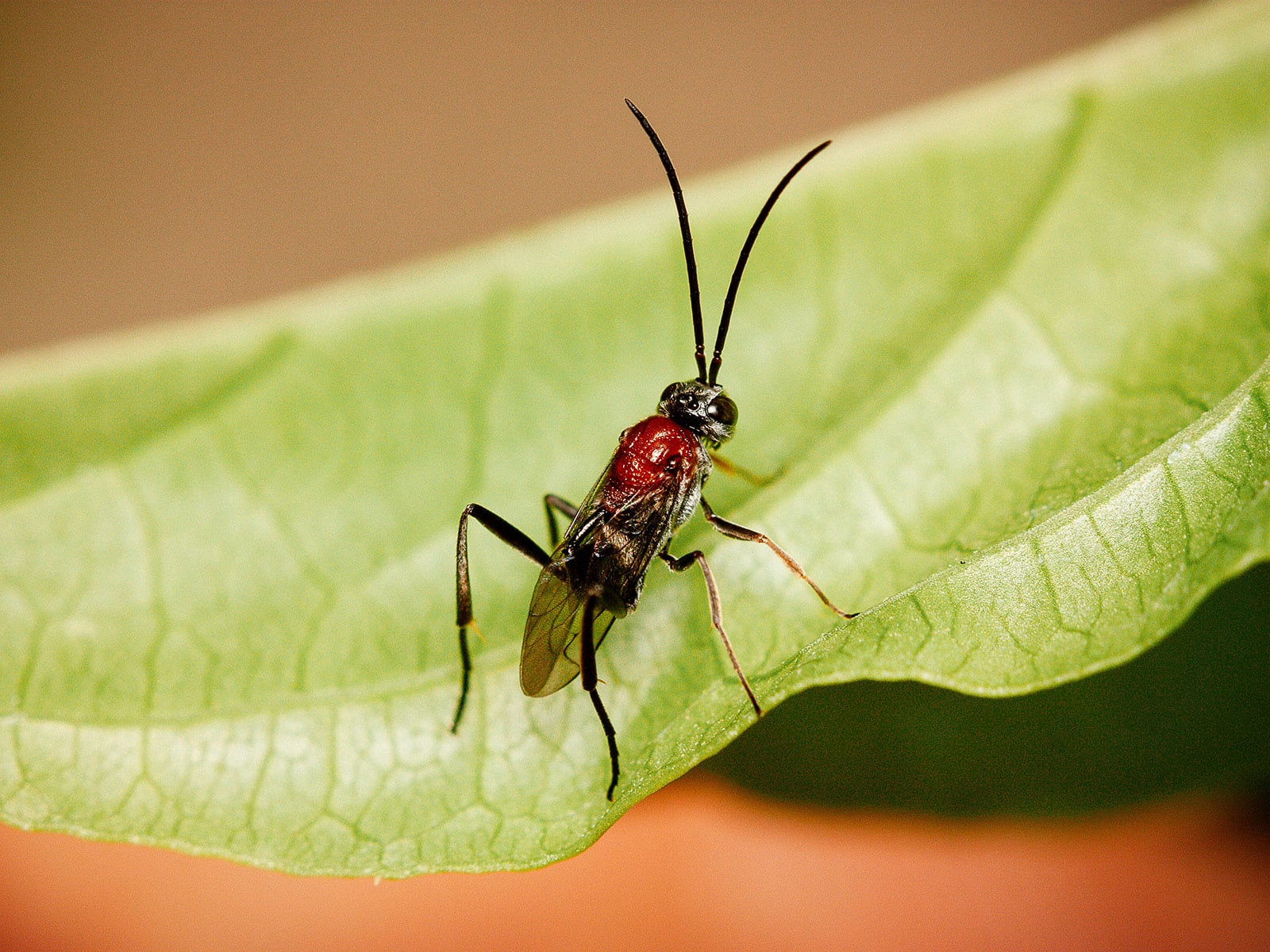
A female braconid can lay between 50 to 350 eggs in her lifespan, and usually deposits one or multiple eggs per host. Some braconids are egg parasitoids, meaning their larvae develop inside the host’s eggs so they never have a chance to hatch.
Other braconids are larval parasitoids and lay their eggs inside caterpillars. Once the eggs hatch, the braconid larvae feed on the caterpillar from the inside out and eventually emerge to pupate in white cocoons.
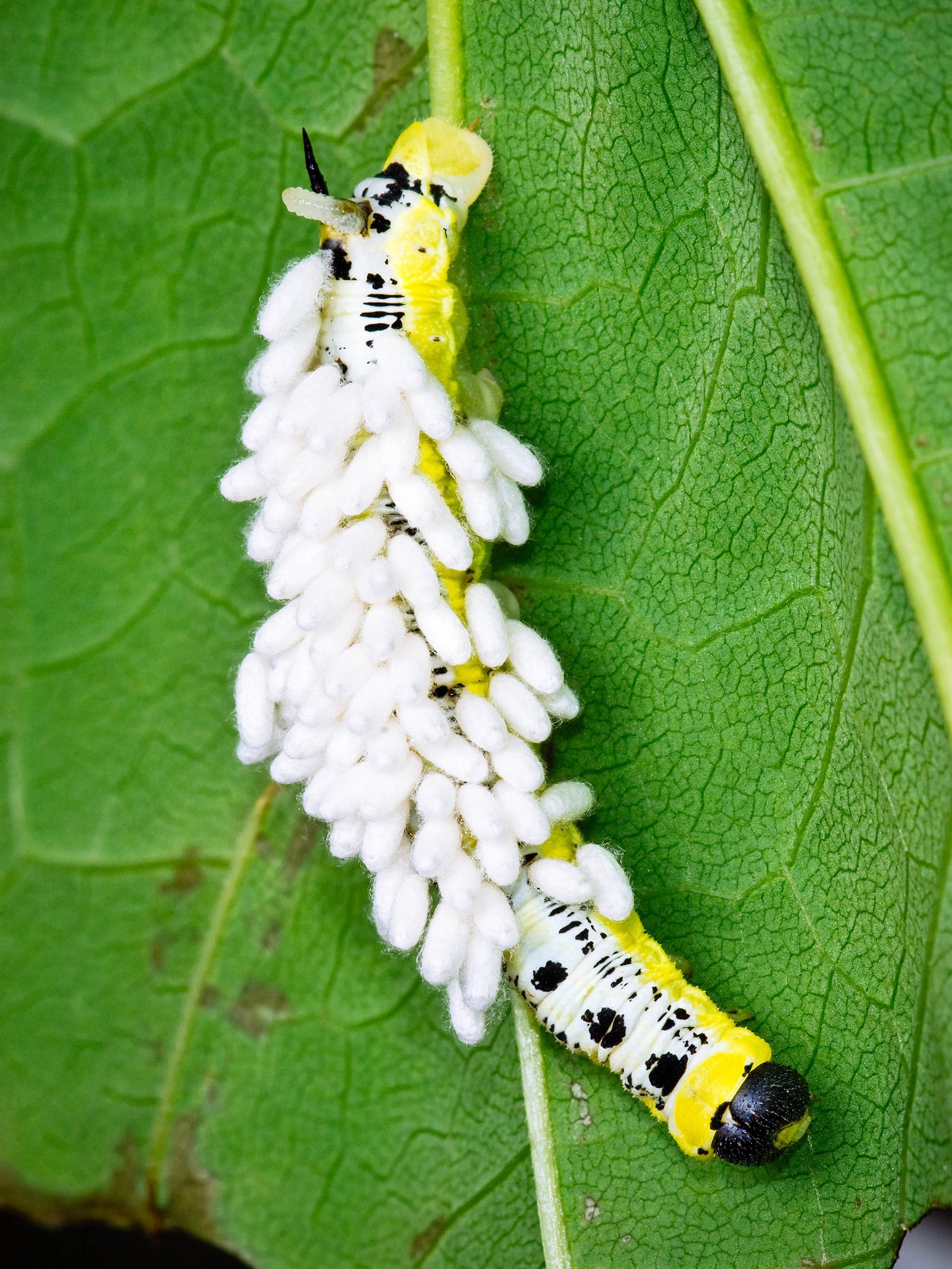
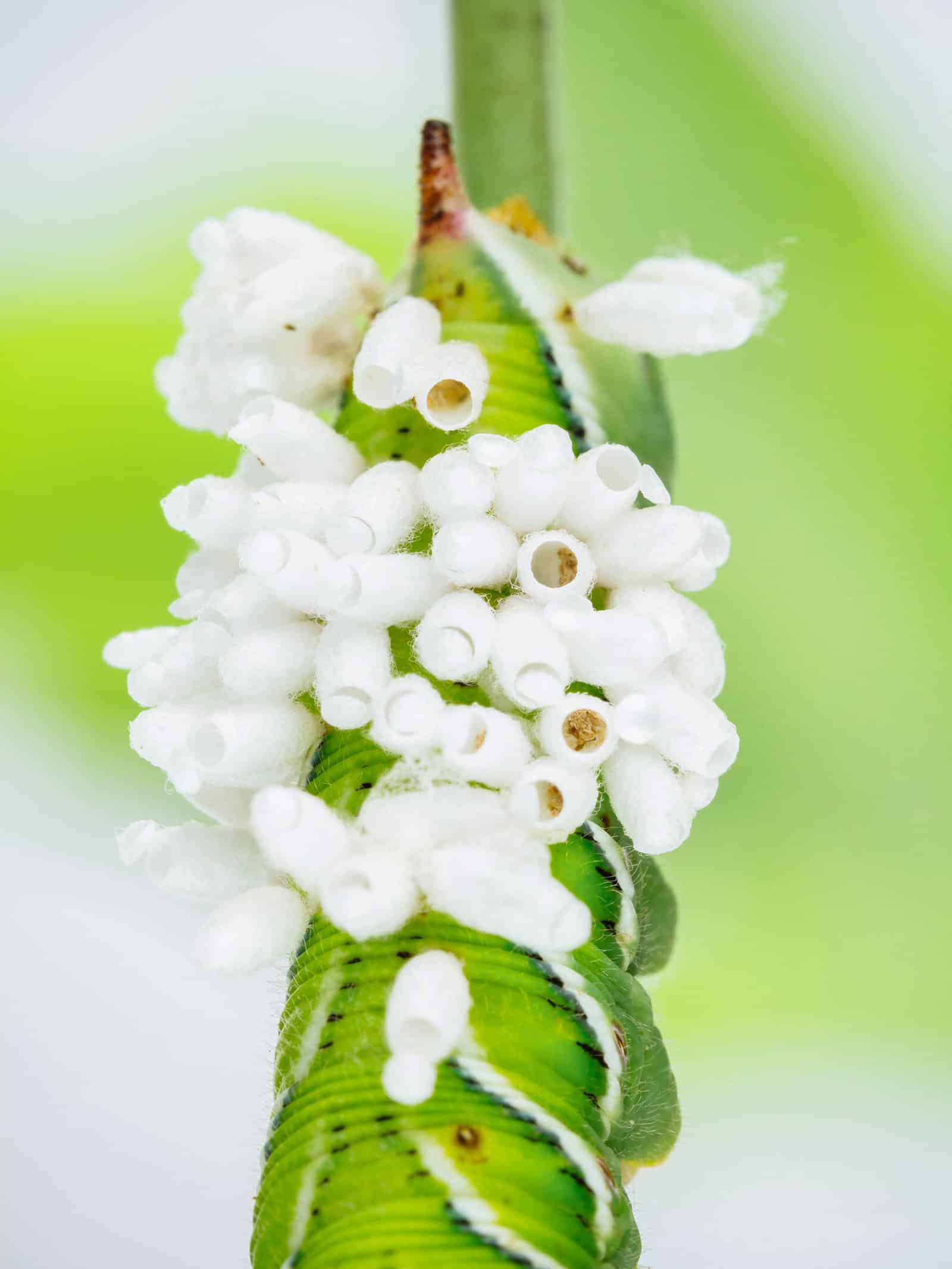
Related: How to identify common striped caterpillars in your garden
Another type of wasp, the aphid parasitoid, lays its egg inside a live aphid. The aphid swells up and turns into a brown mummy as the braconid larva consumes it and pupates inside it. The braconid then chews a hole in the mummy and emerges as an adult.
I found this aphid mummy (with a braconid wasp perched on top of it) on one of my plants that had become infested with aphids. You can see just how miniscule the wasp is when compared to the parasitized aphid!
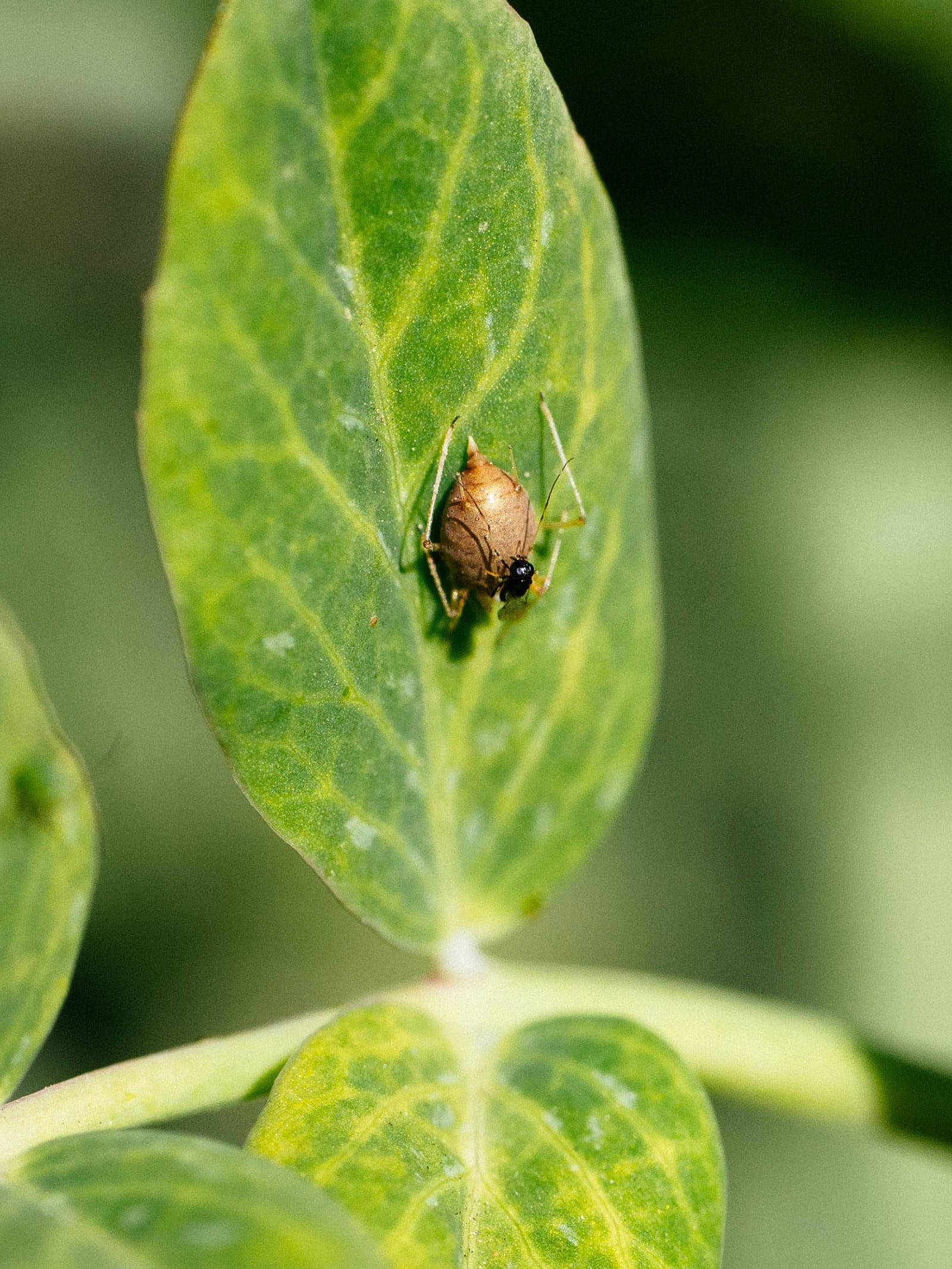
This crazy image of a colony of aphid mummies shows all the holes that new adult braconids emerged from.

Once you know what these look like, chances are, you’ll start noticing them a lot more on your plants. It’s kind of fun (in a weird twisted way) to see how many aphids become parasitized by your garden’s new best friends!
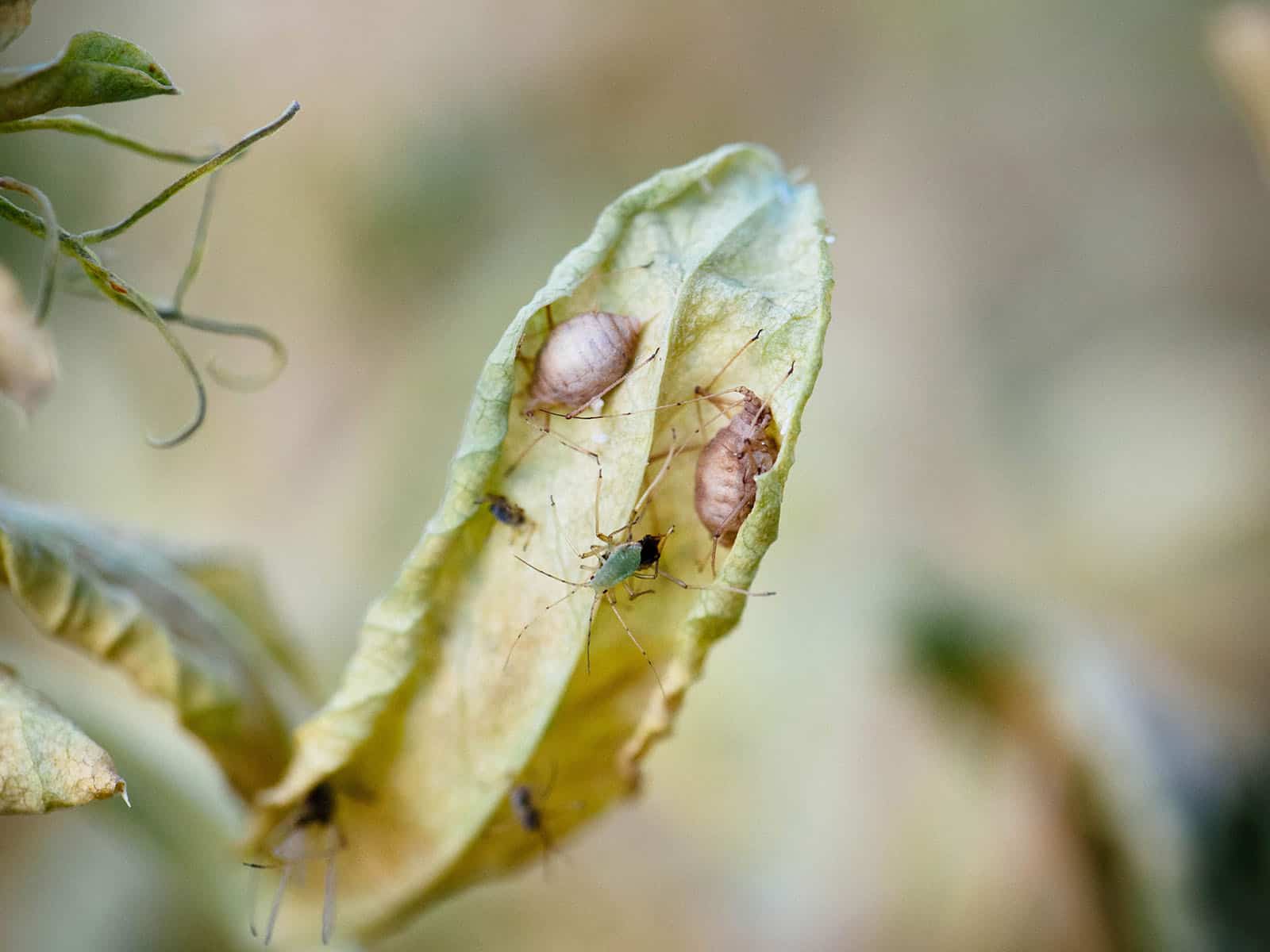
Read more: How to get rid of aphids naturally
The key to attracting braconid wasps
If you want adult braconids to come lay eggs in your garden, you have to feed them well. As a bonus, you’ll only be beautifying your garden more!
Best plants for braconid wasps
Plant small, nectar-rich flowers all over your garden and among your vegetables as a food source for wasps. Some of their favorites include sweet alyssum, yarrow, and members of the Asteraceae family, such as chamomile, fleabane, and sunflowers.
But in my experience, the best plants for attracting parasitoids are those in the Apiaceae family. Parsley, cilantro, fennel, dill, and many others draw an incredible number of braconid wasps when they’re left to bloom.
Where to buy
Umbellifer flower seeds
The defining characteristic of this family is the inflorescence (cluster of flowers). Also known as umbellifers, these plants provide a buffet of nectar and pollen for not only braconids, but also lacewings, hoverflies, ladybugs, damsel bugs, soldier beetles, and many other beneficial insects.
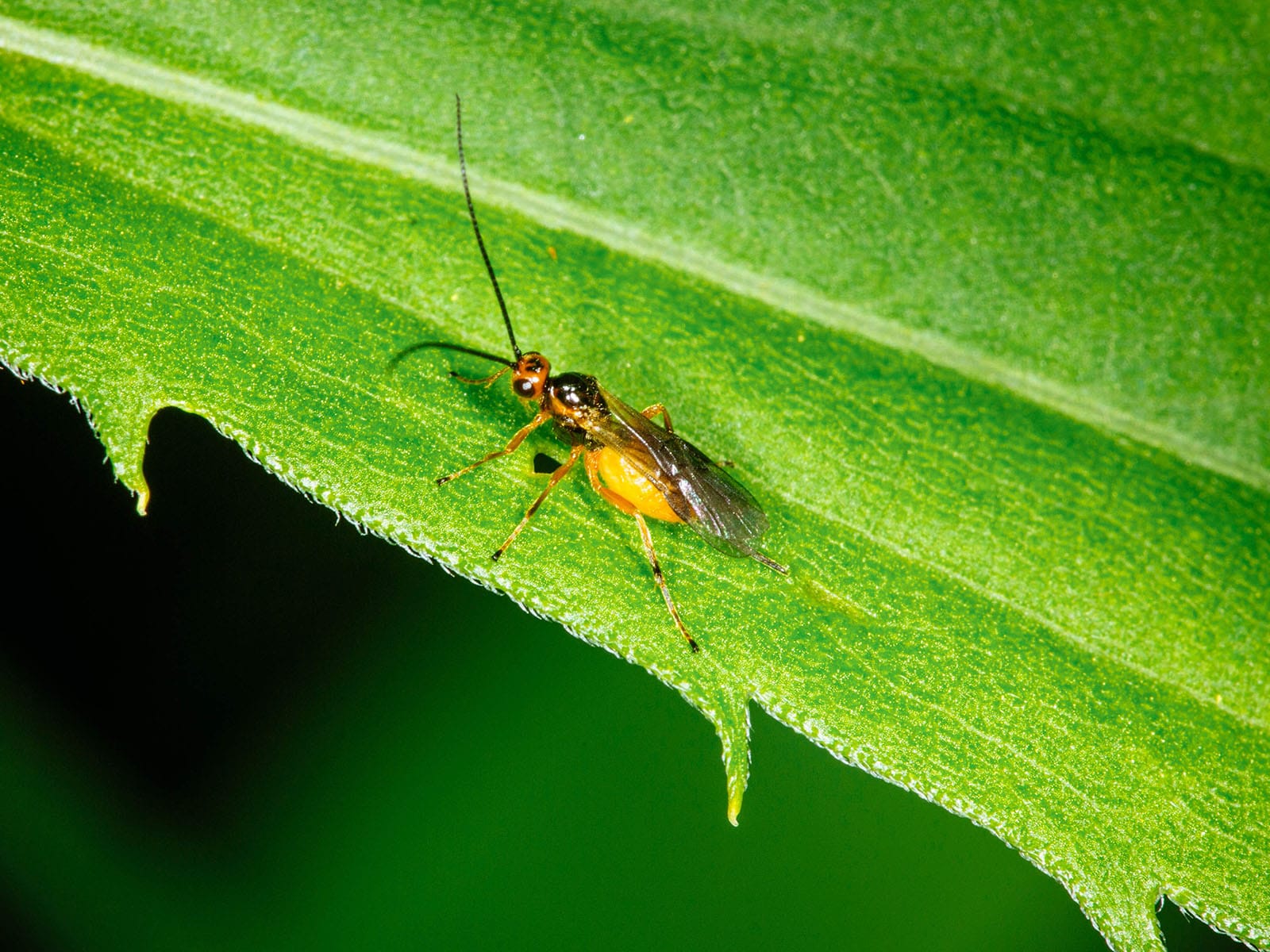
Further reading: The best bee-friendly flowers for your garden
In my own garden, I grow as many umbellifers as I can and usually leave a few patches of flowering herbs over summer and fall as ornamentals. (Bolted plants don’t have to be a bad thing!)
Leaving a few colonies of aphids on your plants—as long as they don’t get out of control—also helps your yard maintain a natural ecological balance. Good bugs need bad bugs as a food source, and without enough pests to keep them (or their offspring) well fed, they won’t stick around for long.
A good way to encourage beneficial insects to stay (without sacrificing your vegetable crops) is to instead sacrifice a few “trap crops” like calendula and nasturtiums. These decoys attract aphids, caterpillars, and other pests, which keep them off your more desirable plants while providing a steady source of food for braconid wasps.
If you build up your biological pest control army this way—simply by planting the right types of plants—you won’t need to buy beneficial insects or resort to chemical controls.


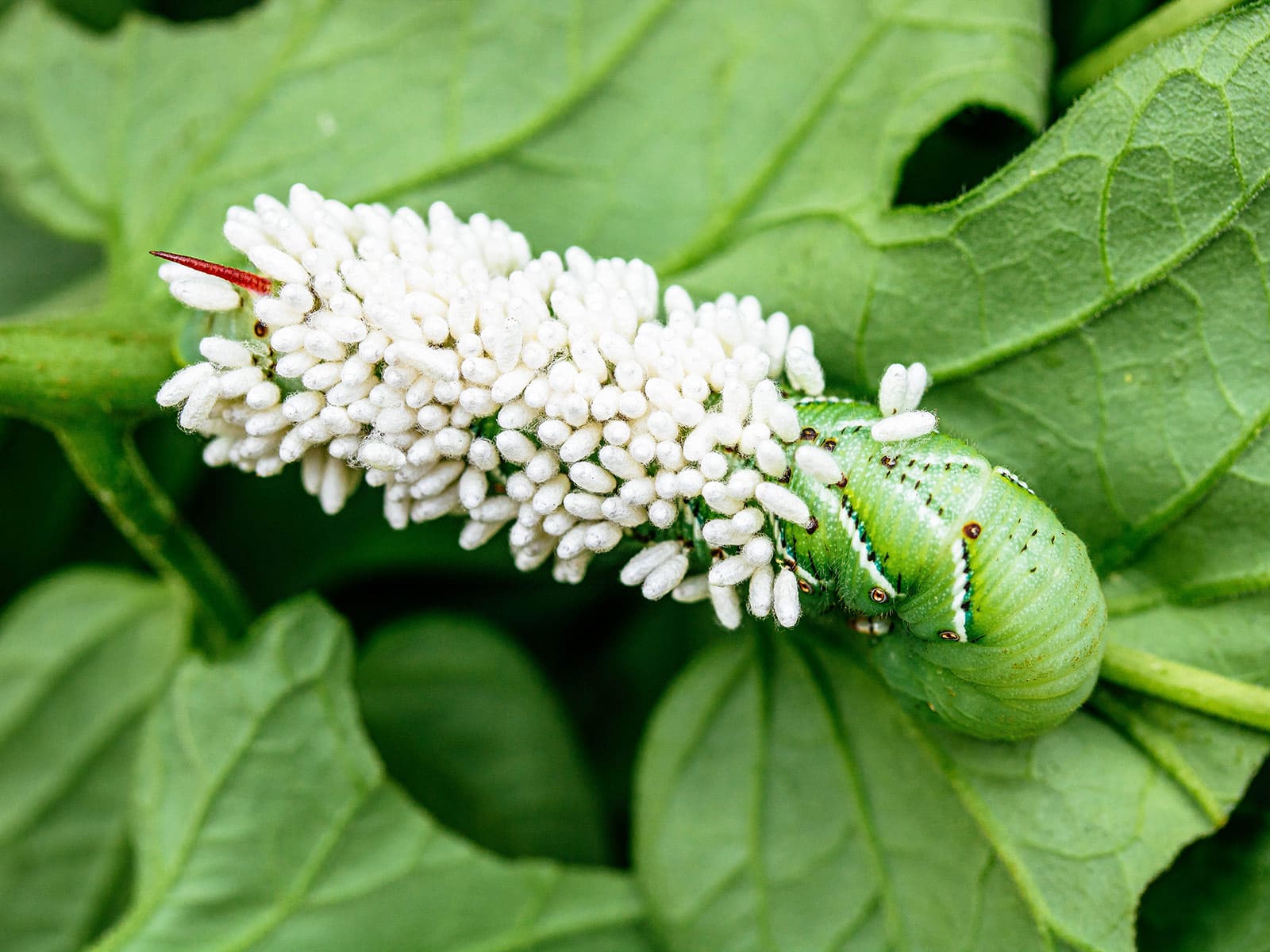













Thank you for this article. I have read and used your articles many times over the last couple of years. I found this while researching a suggestion about a tiny wasp-like bug swarming around our knockout roses. We’ve never had these before, and lots of guesses about what they are so here I am. My husband is convinced that whatever these are they are killing our rose bushes. The leaves are lacey. He purchased a rose systemic at the suggestion of a local nursery, and concocted a dish soap treatment from another. So, if you have any suggestions about where else to look, it would be appreciated. Thank you.
Hi Karen, if you’re able to get pictures of those pests, your best bet is to send them to your local Extension service, as they’ll be more familiar with the insects in your area.